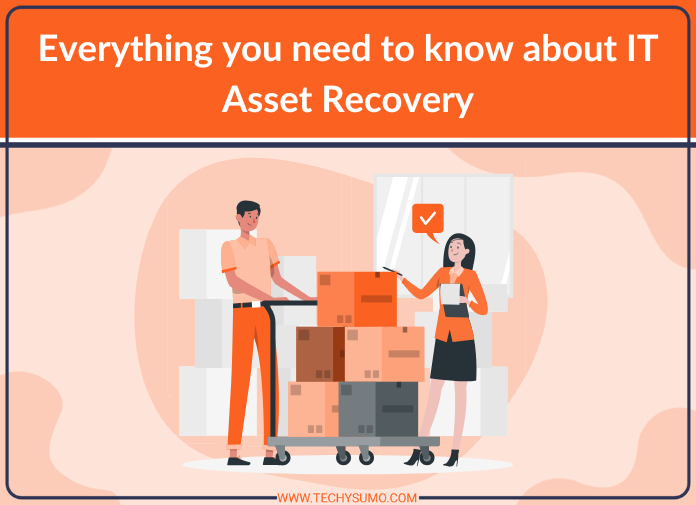In today’s fast-paced digital environment, technology evolves rapidly. As businesses upgrade their systems, they are often left with outdated or surplus IT equipment. Disposing of this hardware inefficiently not only leads to unnecessary costs but also contributes to environmental waste. This is where Asset Recovery becomes an essential strategy. IT Asset Recovery is the process of reclaiming value from used or end-of-life technology through secure and sustainable channels.
Table of Contents
- Why businesses choose asset recovery
- What types of IT equipment can be recovered
- The IT Asset Recovery process: step by step
- The role of sustainability and ESG goals
- Choosing the right IT partner
- The financial side: cost savings and ROI
- Industry applications: one size does not fit all
- Future trends in IT Asset Recovery
- Integrating Asset Recovery into your IT strategy
- Final thoughts
Why businesses choose asset recovery
For many companies, Asset Recovery is more than just a way to clear out old equipment. It’s a method to turn depreciating IT assets into financial returns. It also supports environmental and compliance goals by reducing e-waste and ensuring responsible disposal. With growing pressure to meet sustainability targets and data protection regulations, businesses increasingly turn to solutions that offer both value recovery and secure handling of sensitive data. Asset Recovery meets these needs efficiently and effectively.
What types of IT equipment can be recovered
A wide range of IT hardware is eligible for recovery, including:
- Laptops and desktops
- Servers and networking equipment
- Storage devices and hard drives
- Monitors and peripherals
- Mobile devices such as smartphones and tablets
Even non-functional equipment may still have residual value in parts or materials. By assessing each item individually, companies can maximize their returns while minimizing waste.
The IT Asset Recovery process: step by step

A professional Asset Recovery process typically includes the following steps:
Also Read
- Inventory assessment
All IT assets are documented and evaluated based on condition, age and market value. - Secure data erasure or destruction
Any data-bearing devices are wiped or physically destroyed to meet compliance standards such as GDPR and NIST. - Logistics and collection
Equipment is securely packed and transported by certified handlers to a processing facility. - Testing and refurbishment
Functional items are tested and refurbished to prepare them for resale or reuse. - Resale or recycling
Usable equipment is resold through trusted channels, and non-usable items are ethically recycled. - Reporting and documentation
Detailed reports are provided, including audit trails, data erasure certificates and environmental impact summaries.
The role of sustainability and ESG goals
Modern businesses are expected to integrate Environmental, Social, and Governance (ESG) considerations into their operations. Asset Recovery plays a crucial role in this. It supports a circular IT strategy by extending the life of hardware, minimizing landfill contribution, and conserving raw materials. These efforts not only align with internal sustainability goals but also improve a company’s public image and compliance with evolving regulations.
Choosing the right IT partner

The success of any Asset Recovery program depends heavily on the provider. When choosing a partner, look for:
- Certifications like ISO 27001, R2, NAID AAA, or e-Stewards
- Transparent and verifiable data erasure processes
- Clear logistics, chain-of-custody protocols, and audit-ready reporting
- Experience with compliance requirements in your industry
A trusted partner ensures that the recovery process is not only secure and efficient, but also fully documented and auditable.
The financial side: cost savings and ROI
One of the key benefits of Asset Recovery is the return on investment (ROI) it can deliver. Through resale of viable hardware, businesses can recover a portion of their initial investment. Additionally, costs associated with storage, disposal, and security risks are significantly reduced. For large enterprises, these savings can translate into substantial annual benefits, financial and operational.
Industry applications: one size does not fit all
While the core principles of Asset Recovery remain consistent, the implementation may differ by sector:
- Healthcare: Requires strict HIPAA compliance and certified data destruction
- Finance: Needs secure handling of client data and complete audit trails
- Government: Often demands on-site destruction and regulatory documentation
- Education: Typically manages bulk decommissioning during refresh cycles
Understanding the unique needs of each sector helps tailor the recovery process for maximum efficiency and compliance.
Future trends in IT Asset Recovery

The Asset Recovery industry continues to evolve. Key trends include:
- AI-driven asset valuation to speed up inventory assessments
- Blockchain for tamper-proof audit trails
- Automated logistics tracking for real-time updates
- Increased emphasis on carbon offset reporting as part of sustainability metrics
These innovations are making the recovery process smarter, faster, and more transparent than ever.
Integrating Asset Recovery into your IT strategy
Asset Recovery should not be treated as a one-off solution. By integrating it into procurement, decommissioning, and refresh cycles, businesses can:
- Optimize hardware usage and reduce total cost of ownership
- Improve asset tracking and lifecycle management
- Support sustainability goals and reduce environmental impact
- Mitigate risks related to data privacy and regulatory compliance
A strategic approach ensures that old hardware is no longer a liability, but a source of continued value.
Final thoughts
IT Asset Recovery is a smart, secure, and sustainable solution for managing retired technology. It helps organizations recover value, protect sensitive data, and reduce their environmental footprint. By partnering with a certified provider and embedding Asset Recovery into your IT lifecycle, your business gains financial, operational, and reputational benefits. In an age where compliance and sustainability are top priorities, Asset Recovery is not just an option, it’s a necessity.






